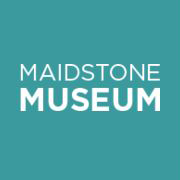Paper Conservation

Hannah, our ‘Skills for the future’ paper conservation intern, talks about her experiences with the historic book collection at Maidstone Museum.
Usually I work at Kent History and Library Centre in Maidstone where I am undertaking an eighteen-month conservation technician traineeship based within the Archives and Local History team. This Heritage Lottery Funded role is part of the “Skills for the Future” project which aims to create opportunities for new entrants to the heritage sector. As well as learning many new skills on the job through training from the archives conservator and other members of the team, I also have the wonderful opportunity to complete placements in other heritage workplaces. I am now part way through one of these placements at Maidstone Museum.
Having regularly enjoyed visits to this museum throughout my life, it has been a joy to see the ‘behind the scenes’ workings of the museum and contribute towards it in a small way. So far whilst here I have been given tours of the store areas, learnt more about how the museum manages its collections and have been working on a condition assessment of the museum’s historic book collection. Everyone here has been very welcoming and helpful and it has been really interesting to see how the workings of a museum differ to those of an archive.
The aim of the main project I am working on whilst here is the condition assessment of the museum’s historic book collection. This will provide a better understanding of the conservation needs of the collection and help inform decision-making in the future. The project continues on from the work of a previous intern and, with so many books to get through, I am playing a small part in a large ongoing process. Working on this project has enabled me to put to use many of the skills I have learnt throughout my traineeship, for example recognising different types of book damage, pest damage and what solutions to recommend.
The museum holds over 5,000 books in its collection in total, most of which were previously held in the Bentlif Library. My assessment involves surveying each of the historic books individually, noting its condition and any damage that has happened to it over time, then making recommendations for its conservation needs and priority. Sometimes as I go through, it’s necessary to take some small steps to ensure that further damage or loss doesn’t occur. For example when I come to a book with a split joint which is close to detaching I have used unbleached cotton tape to tie it together and make sure the boards will not become separated from the text block.
Another aim of this project is to ensure that all of the books held at the museum are accessioned correctly so that their records can be imported to the Museum’s catalogue management software AdLib. Once the collection’s records are on AdLib, this means, in the longer term, they can be made accessible and searchable to interested researchers through the museum’s website.
So far, the oldest book in the collection which I have condition assessed has been a French book published in 1553 titled “Promptuaire des Medalles” which is a guidebook of the medals of notable people of the time and their lives.
Sometimes, I come across books which are made more interesting through the notes and inscriptions found within them. For example, I came across a children’s Christian teachings book published in 1679 which was inscribed with “Sarah Wood. Her book given her by the Rev Mr. Dear” and contained a paper cut-out which creates the image of Jesus in shadow when held up with light in front of it. I also couldn’t resist reading through parts of a 1797 book titled “A Plan for the Conduct of Female Education in Boarding Schools” written by Erasmus Darwin (grandfather to Charles Darwin), which provides a fascinating insight into the expectations of young ladies of the time.
So far, it’s been a very insightful and enjoyable experience working here at the museum. It’s great to work on a project which will improve the care of a collection and means it can be used and appreciated for future generations. Overall, I am very grateful to the museum team for the opportunities given to me whilst here.
